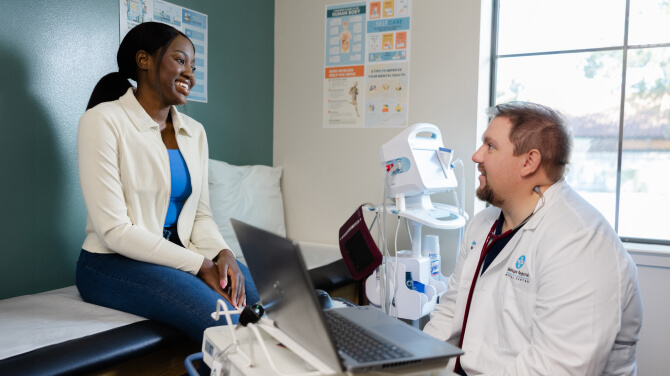Resource Center
All ContentBlogCase StudiesCustomer Success StoriesebooksWebinars- athenahealth
- January 09, 2026
- 4 min read
Transform workflows with smart clinical AI reminders
Boost patient care and RCM efficiency using clinical AI nudges. Explore the benefits now.Read moreMore resources

primary care
Enhancing efficiency and patient experience with NextPatient
- 40%online appointments made after hours
- 25%appointments booked online are new patients
- 4.9star Google rating

- Bob Segert
- January 20, 2026
- 3 min read
AI in healthcare
Why trust, not speed, defines AI healthcare success
What do clinicians really think about AI? Our latest study reveals unexpected findings.
Read more- athenahealth
- January 16, 2026
- 5 min read
optimize scheduling
Smarter orthopedic intake, scheduling, and collections
See how orthopedic patient intake software from athenaOne streamlines operations. Get started today.
Read more- athenahealth
- January 15, 2026
- 4 min read
medical coding & billing
3 ways to improve medical coding speed and accuracy
Need help handling the complexities of medical coding? These three features can make it simpler.
Read more
primary care
Enhancing efficiency and patient experience with NextPatient
- 40%online appointments made after hours
- 25%appointments booked online are new patients
- 4.9star Google rating

- Bob Segert
- January 20, 2026
- 3 min read
AI in healthcare
Why trust, not speed, defines AI healthcare success
What do clinicians really think about AI? Our latest study reveals unexpected findings.
Read more- athenahealth
- January 16, 2026
- 5 min read
optimize scheduling
Smarter orthopedic intake, scheduling, and collections
See how orthopedic patient intake software from athenaOne streamlines operations. Get started today.
Read more- athenahealth
- January 15, 2026
- 4 min read
medical coding & billing
3 ways to improve medical coding speed and accuracy
Need help handling the complexities of medical coding? These three features can make it simpler.
Read more
primary care
Enhancing efficiency and patient experience with NextPatient
- 40%online appointments made after hours
- 25%appointments booked online are new patients
- 4.9star Google rating
Empower your practice

AI powered patient engagement
Learn how AI tools can help improve patient loyalty and outcomes.





